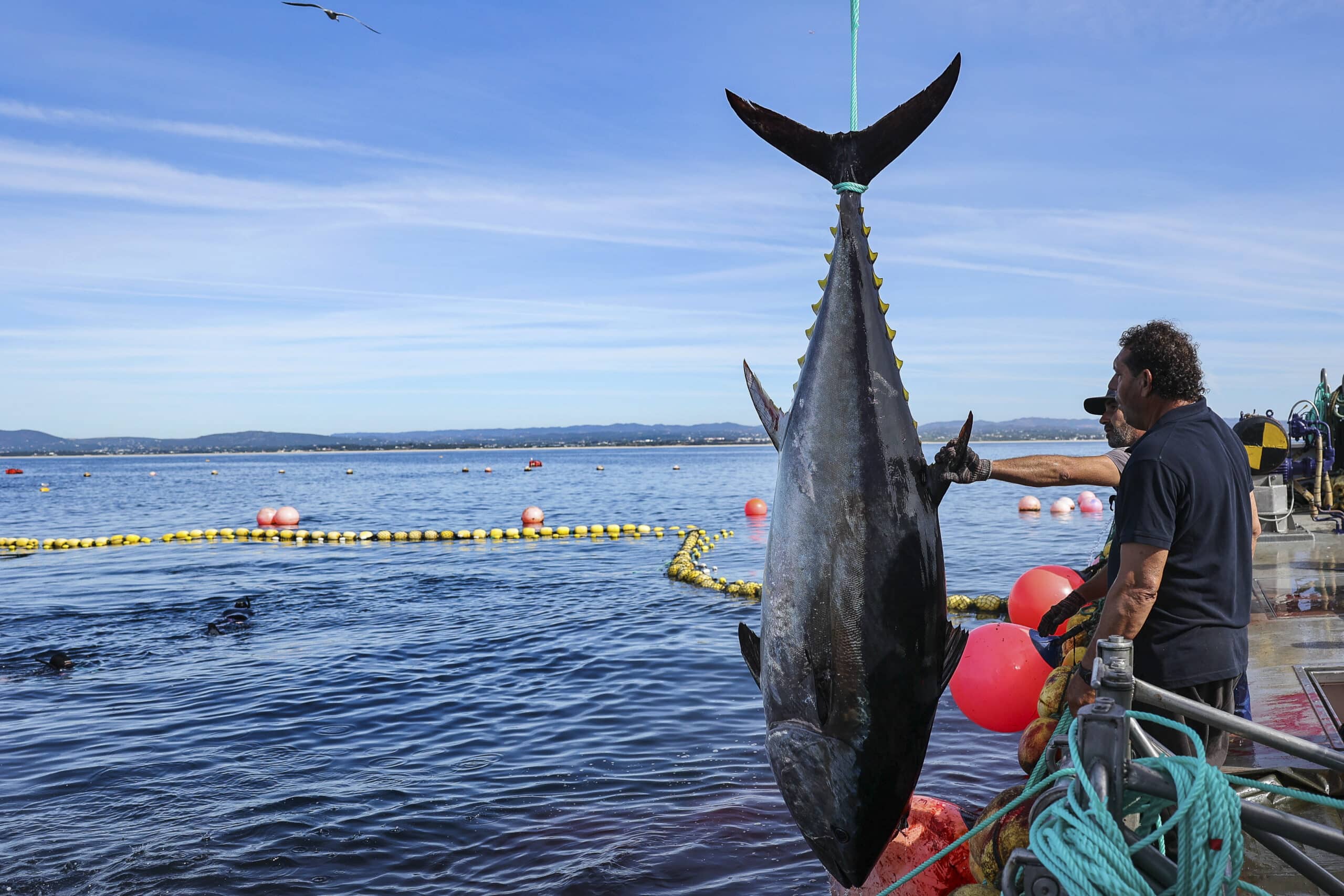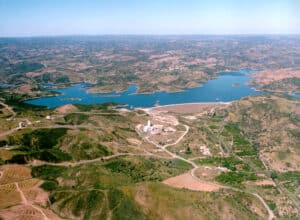100% of fished tuna is exported
The bluefin tuna fishing season began this week in the Algarve with the catching of 100 fish, the largest weighing 330 kilos, at a fishing net structure four kilometres south of Tavira Island.
“It was a day that went well for us. We hope it’s a (good) omen for the rest of the season. We caught 100 tunas, most of which weighed more than 200 kilos. One in particular stood out because it weighed 330 kilos,” Miguel Socorro, general manager of Real Atunara, told Lusa.
Real Atunara and Tunipex are the two companies in Olhão dedicated to bluefin tuna fishing using the centuries-old almadrava method, a fishing frame, or sustainable fishing gear, which, as opposed to trawling, avoids the destruction of the seabed and respects the preservation of the species.
Lusa news agency accompanied the start of the bluefin fishing at the Barril fishing frame, around four kilometres south of Tavira Island.
The day began at 6.30am in the Olhão Fishing Port with the arrival and preparation of a team of around 30 people on two boats, which soon after began the journey of around 15 kilometres to the fishing frame.
The almadrava – from the Arabic almadraba – which combines the words “alma”, meaning place, and “darab”, meaning fight – is a structure supported by anchors and cables, made up of vertical nets that create a sophisticated labyrinth, a trap that catches bluefin tuna travelling towards the Mediterranean.
This type of fishing has existed for over 3,000 years and in 1898, according to historians, there were as many as 18 traps along the Algarve coast. But in the 1950s, the tuna fishing crisis in the Algarve saw this technique almost disappear.
The almadrava season normally runs from May to September. In May, bluefin tuna migrate from the cold waters of the Atlantic to the warmer waters of the Mediterranean to spawn, passing through the Strait of Gibraltar. From July onwards, the species makes its way back to the Atlantic.
When questioned by Lusa about the difficulties posed by this type of operation, the captain of the fleet and master of the main boat, Rui Ornelas, said that it depends on the sea conditions, admitting that it can sometimes be complicated.
“(…) Because this isn’t a job on land with stable ground, there is movement. But as long as everything is structured and organised, things are always the same, they’re always repetitive. So there’s not much difficulty,” said Rui Ornelas, predicting a good season and that the quota set for tuna catches will be reached.
According to Miguel Socorro, Real Atunara will be able to catch 220 tonnes of tuna this year, an operation that involves a team of 35 people, mainly made up of sailors, masters and machinists from its fleet of boats and a team of divers.
After years of excessive catches that led to a significant reduction in the stocks of this species at sea, tuna fishing was regulated in order to rebuild them, and bluefin tuna fishing has become a sustainable operation, respecting the natural cycle of the animals and complying with the recommendations of ICCAT (International Commission for the Conservation of Atlantic Tunas) and European Union directives.
“It’s a product that will be exported 100% and will surely delight the most demanding chefs, who only work with top quality products,” said the director-general of Real Atunara.
At lunchtime, the two vessels returned to the port of Olhão, where two TIR lorries were waiting to transport the 100 tunas to customers in Spain.
Bluefin tuna is part of the traditional cuisine of several countries, most notably Japan, with its popularity and price constantly growing, and it is considered a “culinary jewel”, reports Lusa, coveted by chefs in great restaurants and appreciated by consumers all over the world.
Source: LUSA


























